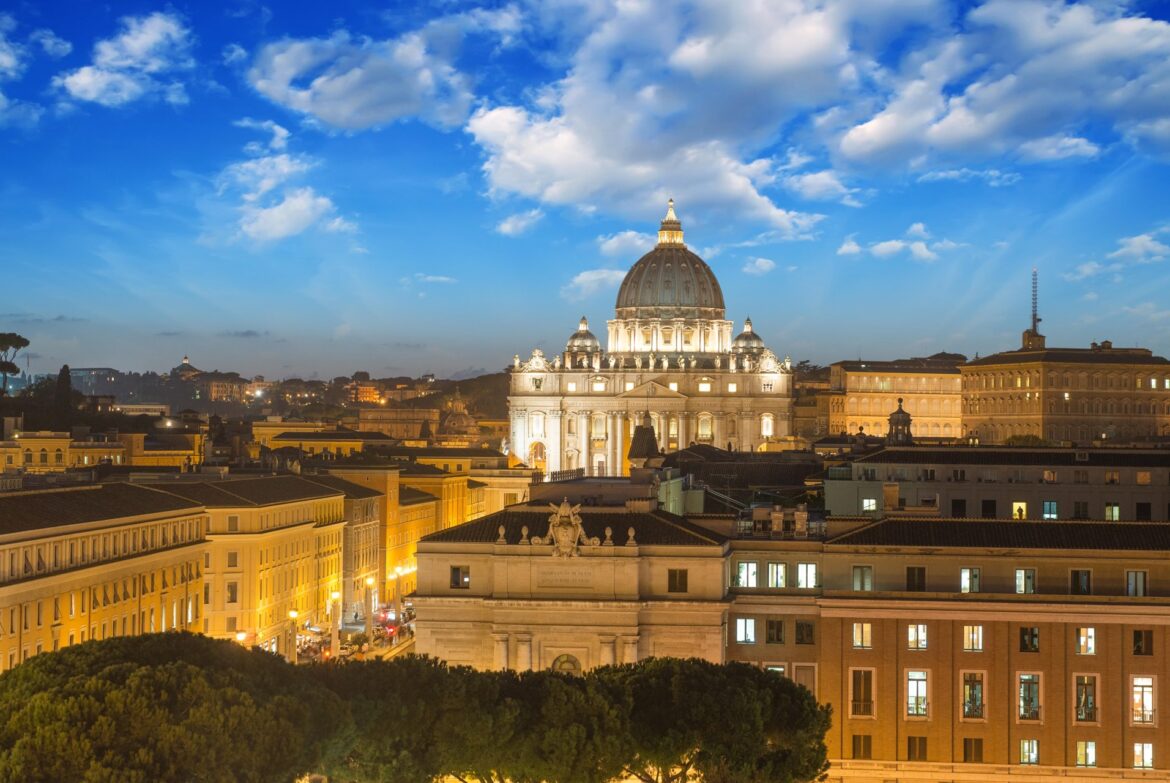The Vatican City, an enclave nestled within the heart of Rome, stands as a colossal testament to the grandeur and reverence of the Roman Catholic Church. It is not merely a geographical location but a spiritual bastion that encapsulates centuries of ecclesiastical tradition and divine inspiration. At its core lies St. Peter’s Basilica, the largest Roman Catholic church in the world, a magnificent sanctuary where the earthly and the celestial converge in an astounding display of architecture, art, and faith.
To describe St. Peter’s Basilica is akin to attempting to encapsulate the ocean in a glass. Its vastness is overwhelming; the sheer scale invites awe and introspection. With its dome, designed by Michelangelo, soaring 136 meters above the ground, it serves as an architectural metaphor for the aspirations of humanity reaching toward Heaven. This domed structure, a symbol of God’s omnipresence, beckons the faithful and the curious alike to look upward, fostering a sense of transcendence that is rare in modern edifices.
The edifice itself is a synthesis of various artistic movements, encapsulating a rich tapestry of Baroque extravagance, Renaissance innovation, and classical inspiration. Upon entering, one is greeted by the enchanting sight of white marble, gilded accents, and intricate mosaics that narrate the stories of saints and biblical events. Each corner of the basilica invites exploration and reflection, much like the multifaceted nature of faith itself, offering layers that reveal deeper truths upon contemplative examination.
The interior boasts an array of altars, each with its unique story and significance. The Papal Altar, situated directly above the tomb of St. Peter, serves as the epicenter of Catholic worship during major liturgical events. This hallowed ground stands as an enduring reminder of the legacy of the Apostle Peter, considered the first Pope and a rock on which the Church was built. His martyrdom and subsequent burial here affirm the basilica’s role as a pilgrimage site, drawing millions from around the globe who seek to connect with their faith’s historical roots.
One cannot speak of St. Peter’s Basilica without mentioning the stunning artistry that graces its walls. The Pietà, a masterwork by Michelangelo, portrays the Virgin Mary cradling the lifeless body of Jesus, encapsulating in marble the profound themes of suffering, love, and redemption that run deep within Christian theology. This sculpture is not merely an artistic endeavor; it serves as a contemplative focal point that encourages the viewer to engage with the crucible of human emotion, resonating across ages and cultures.
The basilica’s serene ambiance invites solitude amidst the bustling crowds, an oasis of quietude in a frenetic world. It embodies a unique appeal that transcends mere architectural merit; it is a place where spiritual reflection and communal worship harmoniously coexist. The sounds of whispered prayers and the flickering candles create an atmosphere imbued with reverence, urging visitors to reconnect with their spiritual essence.
Moreover, St. Peter’s Basilica symbolizes the universal nature of the Catholic Church. As the epicenter of Catholicism, it is a microcosm of the Church’s reach and influence across diverse cultures and nations. It acts as a unifying force, where the faithful gather regardless of their background, united in their devotion and reverence. This assembly of souls transforms the basilica into a vibrant tapestry of faith, weaving individual stories into a collective narrative that spans generations.
Historically, the Vatican has served as a pivotal point in the development of Christian doctrine and governance. The papal authority, emanating from this sacred ground, has shaped theological discourse and pastoral practices for centuries. The Basilica itself stands not just as a monument of architectural splendor but as a witness to pivotal moments in Christianity’s history, where councils were convened and decisions made that would resonate through time, impacting millions in their spiritual journey.
The organizational structure surrounding the Basilica — from the Vatican Museums to the Sistine Chapel — further enhances its allure. These institutions serve as expansive repositories of the Church’s artistic and cultural heritage, presenting an interplay of faith and creativity. The frescoes of Michelangelo’s Sistine Chapel embody the divine inspiration of the human spirit, inviting onlookers to engage with scripture in a visceral, transformative manner.
In many respects, the experience of visiting St. Peter’s Basilica is akin to embarking on a pilgrimage, a journey inward as much as it is outward. It challenges visitors to confront their beliefs and to ponder their place within the narrative of the Divine. As they traverse its grand halls, they are met with reflections of hope, despair, and the enduring promise of salvation, resonating deeply within the soul.
In conclusion, the largest Roman Catholic church in the world is more than an architectural marvel; it is a living testament to the faith that has captivated hearts and minds for millennia. St. Peter’s Basilica, with its resplendent art and rich history, remains a spiritual giant, offering an unassailable sanctuary for all who seek solace, inspiration, and a deeper connection to the Divine. In an increasingly fragmented world, it stands resolute, inviting every individual to reflect on their spiritual journey while elevating their understanding of the sacred. Each visit to this sacred site not only pays homage to its majestic grandeur but also revives the intrinsic quest for meaning that lies within every human heart.



